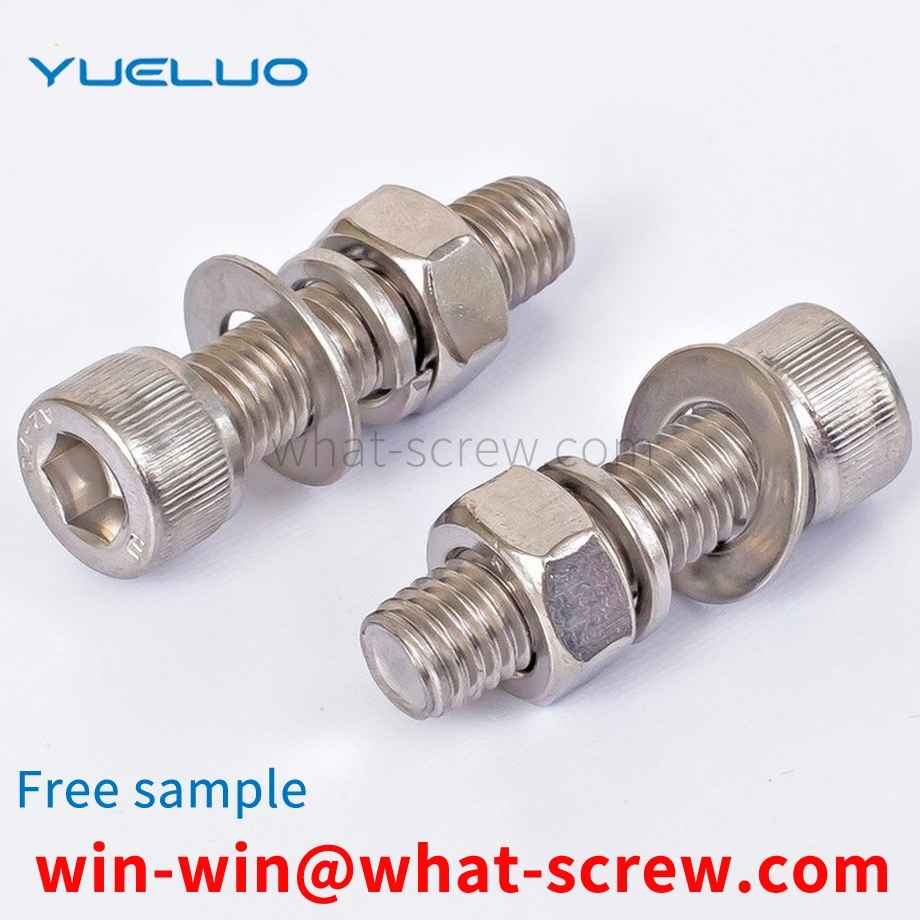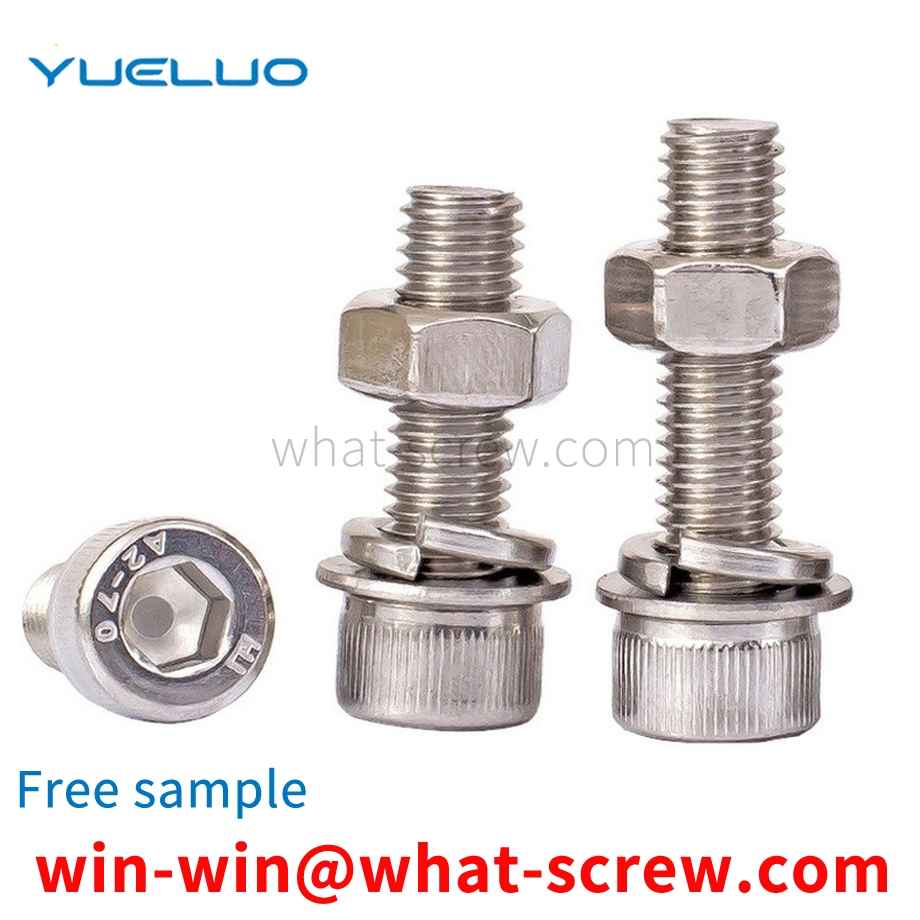1. Fixed anchor bolts, also known as short anchor bolts, are poured together with the foundation and used to fix equipment without strong vibration and impact. 2. The movable anchor bolt, also known as the long anchor bolt, is a detachable anchor bolt used for fixing heavy machinery and equipment with strong vibration and impact. 3. Expansion anchor bolts are often used to fix stationary simple equipment or auxiliary equipment. The installation of expansion anchor bolts should meet the following requirements: the distance from the center of the bolt to the edge of the foundation shall not be less than 7 times the diameter of the expansion anchor bolt; the foundation strength of the expansion anchor bolt shall not be less than 10MPa; there shall be no cracks in the drilling holes. The drill bit collides with the steel bars and buried pipes in the foundation; the diameter and depth of the drill hole should match the expansion anchor bolts. 4. The bonding anchor bolt is a kind of anchor bolt commonly used in recent years, and its method and requirements are the same as the expansion anchor anchor bolt. However, when bonding, pay attention to blowing out the debris in the hole, and do not get wet. [1]
Yueluo Guangdong Yueluo Hardware Industry Co., Ltd. provides a rivet-oriented positioning riveting tool to overcome the shortcomings of the existing technology. The rivet is placed on the tool, and then placed in the riveting machine together with the product for riveting. In the same way, the scrap rate is reduced and the production efficiency is greatly improved. In order to achieve the above purpose, a rivet guide positioning riveting tool is designed, which includes a riveting positioning block and a riveting lower die, which is characterized in that a riveting positioning block is arranged above the riveting lower die. The riveting positioning block includes a positioning pin and a rivet yielding hole, a through hole is arranged in the center of the riveting positioning block, a rivet hole is arranged on one side of the through hole, and a number of positioning pins are arranged on the riveting positioning block around the through hole. . There are five positioning pins. The riveting lower die includes a countersunk head screw hole, a rivet guide block and a positioning hole. The riveting lower die is a stepped module. The left side of the riveting lower die is provided with a countersunk head screw hole, and the right side of the riveting lower die is provided with a countersunk head screw hole. The guide block is provided with several positioning holes on the riveting lower die located in front of the guide block. There are two positioning holes. The center of the guide block is provided with an escape hole. Compared with the existing technology, Guangdong Yueluo Hardware Industry Co., Ltd. has a rivet-oriented positioning riveting tooling. The rivets are placed on the tooling, and then placed in the riveting machine together with the product for riveting, which solves the problem of manual knock-in. The efficiency is low, and the riveting can be riveted without deviation without manual righting during riveting, so that the quality of the products produced is the same, the scrap rate is reduced, and the production efficiency is greatly improved.
The elastic cylindrical pin, also known as the spring pin, is a headless hollow cylindrical body, which is slotted in the axial direction and chamfered at both ends. It is used for positioning, connection and fixation between parts. The outer diameter of the spring pin is usually slightly larger than the mounting hole. The deformation force generated by the elastic cylindrical pin to be restored to its original state by extrusion ensures the clamping effect of the elastic cylindrical pin. But just because of its clamping effect, it will play a big obstacle to the disassembly of the elastic cylindrical pin. When in use, the open end is extended out of the through hole on the pin shaft, and the open end is flared and separated to prevent the elastic cylindrical pin from sliding off the pin shaft to realize the function of preventing backlash. At present, the disassembly method of the elastic cylindrical pin usually uses a punching machine to remove the cylindrical pin, which easily destroys the equipment installed on the cylindrical pin, and the disassembled elastic cylindrical pin cannot be used again due to damage. One method is to insert the mounting pin with the clearance fit of the mandrel, punch the pin behind the mandrel to clamp the bottom of the cylindrical pin, and then pull out the cylindrical pin, which can only be used when the elastic mounting pin is installed in the through hole, and because it is necessary Applying force to the mandrel increases the difficulty of disassembly and increases the work intensity of the installer. Three methods are done by the installer using two needle nose pliers. Specifically, first use needle-nose pliers to clamp the ends of both sides of the elastic cylindrical pin, and then apply an inward force to the needle-nose pliers, so that both sides of the elastic cylindrical pin rotate in the same direction until the opening becomes smaller, and then Pull it out to remove it successfully. The defects of these existing methods are obvious. The shape of the disassembled elastic cylindrical pin is either unusable or the deformation of the cylindrical pin after disassembly is not uniform, which seriously affects the performance of the elastic cylindrical pin, resulting in waste and increased cost; The method is purely manual work, and sometimes it takes several repetitions to remove the elastic cylindrical pin. Due to the different installation positions of the elastic cylindrical pin, it sometimes increases the difficulty of disassembly, and it is difficult to remove the needle-nose pliers effectively. The pliers are difficult to construct, and the elastic cylindrical pins are easily damaged. If there are too many elastic cylindrical pins to be disassembled, the existing methods are often difficult to meet the needs, which not only consumes a lot of time and physical strength of the installer, but also makes it difficult to ensure the quality.
Here Yueluo eliminates the drawbacks. The purpose of Yueluo is to provide a locking screw by which the gap existing between the locking screw and a transverse hole in a locking screw can be eliminated. Yueluo achieves the proposed object with a locking screw, which has the features of claim 5 . The line connecting the centers of gravity of the respective axially continuous orthogonal cross-sectional areas of the locking screw is regarded as a line. The advantage achieved by Yueluo can basically be seen that, due to the locking screw of Yueluo, the gap between the horizontal hole of the screw and the locking screw can be eliminated. Other advantages are as follows - the insertion accuracy and surgeon time spent remain within the range to date; - the strength of the locking screw is maintained; and - the extraction of an expired broken screw is assured. The further composition of Yueluo and Yueluo is explained in more detail below by means of schematic diagrams of parts of various embodiments.
Cross recessed pan head screws refer to cross recessed machine wire screws, which are represented by the letters PM. The country stipulates that the thread specification is M1.6-M10, the performance level is 4.8, A-50, A2-70, CU2, CU3 and AL4, H-type and Z-type cross recessed, and the product grade is Class A cross recessed pan head screws . If other technical requirements are needed, they should be selected from the current standards (such as GB/T196, GB/T3106, GB/T3098.1, GB/T3098.6 and GB/T3098.10).
We have many years of experience in the production and sales of screws, nuts, flat washers, etc. The main products are: short-toothed rods, through-wire screws, three-piece bolts, 202 stainless steel screws, one-piece expansion bolts and other products, we can provide you with suitable products for you. fastener solutions.



















 Service Hotline
Service Hotline




